TDA1541A
DAC chip corner
After trying many various DAC chips, I found myself to have a
preference for one particular chip. Much has been written about
TDA1541A DAC all over the world, but I found it without prior
opinion seeking - just by my ears. It is funny for a mere electronic
component to be worshiped like an object of religion, but this chip is
such rare case. Augmented by the fact, that they are no more in
production. The chip TDA1541, and especially the single crown selection
S1 and TDA1541A/S2 is so desired that there are counterfeit chips on
second hand market and unfortunately on ebay too.
There are some fantastic web sites which I discovered recently -
dedicated to TDA1541A DAC wholly or in part,
most famous ones are from Pedja Rogic, Thotsten Loesch, Lesha and some
others. These wonderful people spent considerable time
researching good CD sound and they all like me reached the conclusion
that the good old TDA1541A DAC is still the one
to beat. They all use it with non-oversampling mode at 44,1 kHz
sampling rate and some of them use tube output too.
Thanks to the lampizator output stage , I can listen to different CD
players, and
because the output stage is every time the same lampizator, I can
compare the DAC to DAC
and its adjacent chips in digital domain - the dig filter, the input
receiver, and the whole implementation. I believe I have got to the
naked character of different DACs. And it is apples to apples if
you know what I mean. I am deeply convinced, that the
stock output stage used in all CD players including the best ones -
damages
the sound quality a lot.
The spec sheet can be found
here: TDA1541A
LINK
This TDA1541A DAC chip is large, it gets hot, it is (was) expensive to
build,
it is 16 bit compatible and can be used with or without over sampling.
Usually it is 4 or 8 times over sampled.
It was made by Philips after their first DAC ever - the TDA1540 - which
was famous for being incompatible with the real CD format of 16 Bit
word length by having only 14 bits. That didn't stop it (the 1540) from
sounding very very good.
Philips produced the TDA1541A DAC for a couple of years,
probably from 1985
(non-A version) and from 1989 - A version - slightly improved, and
ceased it circa 1995. In these years the entire European and Japanese
hifi industry (even Sony) produced millions of CD players with the TDA.
At that time they were not considered that special, humanity was
looking forward to having better and better chips every year.
Tadadada! Not true ! To some degree Burr Brown of Japan, later bought
by Texas, succeeded in making very good chips. Probably the PCM63K
being the closest. Crystal, NPC and Analog Devices are not bad too, and
that's all. Oh I forgot - the MASH from National Matsushita - very
popular in Poland
thanks to Technics players (actually one of my favourite DACS -surprise
surprise).
And worth mentioning is that there is TDA1541AT/C1 - a SMD version of the TDA1541A,
otherwise identical.

BLOCK DIAGRAM of TDA1541A/S chip
Some of you audio fetishists when discussing TDA1541A will be thrilled
only by the Single Crown and Double Crown (S1 and S2 variants
respectively) which are nothing more than marketing buzzwords for
selected 1 % and 1 Pro mile of the production batch which matches
closely the ideal benchmark performance. So in fact - the crowns are
just the regular A's which measure above average. Like the
Representation Army Squad which greets politicians and kings at the
airports.
Actually, I may be alone here, but I think that the old non-A has the
most lively and energetic sound. This is a rough diamond. I can not
swear by the A being any better.
The sonic characteristic of TDA1541A DAC players is very easy to
distinguish -
after hitting PLAY after trying other DACS you can hear a big
difference immediately, BUT I
can't describe it at all. It is very hard to put in words. The sound is
very rich, full, mature, ripe, analogue, liquid, dynamic, and with huge
macro dynamics. It has the best midrange, best treble and very very
good
bass.
The main difference is: that I like it more than any other DAC chip, it
is so
ear friendly.
This chip is stereo but unbalanced. We need at least one per CD.
One of the best audio companies of all times - one of my private
favourites -
Cambridge Audio - used to make a CD player called
CD3 which had 4 of paralleled standard non-S1
TDA's per unit.
I have yet to find one for myself !
WHY TDA1541A DAC ?
THE BIG QUESTION: Mr.
Fikus, are you dogmatic about using old shit and
why you deny the technical progress of our wonderful industry? Are you
some kind of a lunatic, a gaslight advocate? Are you a hi-fi Amish?
Are you on drugs? What is wrong with you that you do not like 24
bit/192 KHz and HDCD and SACD and VLSI chips?
Here is what I can say: There are two kinds of resolution: digital and
analogue. We can talk in digital "language" and conclude, that a
digital
information can have a certain - say 16 bit - word length. And the chip
that reads it must be able to operate with 16 bit length of words. But
can it (DAC) put out the resulting sine wave with similar accuracy ???
That is the KEY QUESTION.
Bits are the smallest measurement units which we can apply to
the process. It is sort of like in digital cameras. Would you buy a 100
Euro Casio pocket camera which has a CCD with 10 million pixels or
rather a 8 million Canon D30 XLR? The number of pixels on the casio is
better, but it is all lost in firmware, compression, lens quality,
accuracy of power supply, etc. In music reproduction, our CD has 16
bits. No matter what DAC we use - it is still 16 bits. That's means
that
we can reproduce a 2 V pp signal with accuracy of 2/65500 Volts.
So why the cheap DVD player with real 24 bits is not immediately
better? Because increasing the digital resolution does not have a
chance to come through the process. The fact that digitally speaking
the chip can "understand the word -length of 24 bits" does not
guarantee, that after reading it will output music of equally great
nuance resolution. Remember - reading is not understanding. Just like
with this text. Because the other elements which
play role - the timing of impulses (clock) and the power supply
stability and the analog stage - all have possibility to reproduce
signal with accuracy of say 0,01 % which is 1/10000 which is far from
1/65500 and VERY FAR from 24 bit number, which is 2 to the 24th power,
which is 65500 times 2 to 8-ght power which is A LOT. Actually it is 17
millions.
The non mathematical explanation is possible if we take the example of
say the printer. Some printer manufacturer can claim the resolution of
20
000 dpi. This may be a valid claim for the ink injecting head
resolution and it's software, but the "analog" result will be that the
drop of ink will smear over an area 10 x bigger than its injector
nozzle, and B) the paper structure has fibres 10 x bigger than the 20
000 dpi requires. So the picture limitation is in the paper ink
interaction, not the head injector resolution. Not to mention accuracy
of head movement on the rails, temperature of injectors, air pressure
and humidity etc.
So somebody promising a resolution of 24 bits is effectively claming
that he produced electrical device which controls the output signal to
a wide range of loads with accuracy of one/17 millionth part of a volt.
THIS CLAIM IS NOT VERY SERIOUS. We take it with a grain of salt.
So dear readers, there is no correlation between increased number of
bits above 16 and sound quality. At least it is not automatically
guaranteed. I suggest we rather concentrate on the best usage of
the
bits which we have, than worry of these bits we don't have.
The taste in DAC chiops is something very subjective, but I have much
more opportunities to compare DACS because I remove other variables
like output stages, capacitors, opamps and stuff like that. I listen to
NAKED CHIPS via the same lampizator every time, so I know how DACs
compare.
TDA1541 is very strong contender to being the best, some rivals may
actually come close, equalize or have an edge in ONE area but no DAC
can really seriously beat the TDA. Yes, it is THAT good. Especially in
NOS mode and with very good capacitors around it.
For those interested in the TDA1541 debate - S1, S2, A - non-A, fake or
real - here is the must read link:
http://www.diyaudio.com/forums/showthread/t-32587.html

Philips CD304mkII (non-A chip) I LOVE the non-A, it is very vigorous.

Two A1-"S" in the Grundig 9009 (but only parallel, not differential)
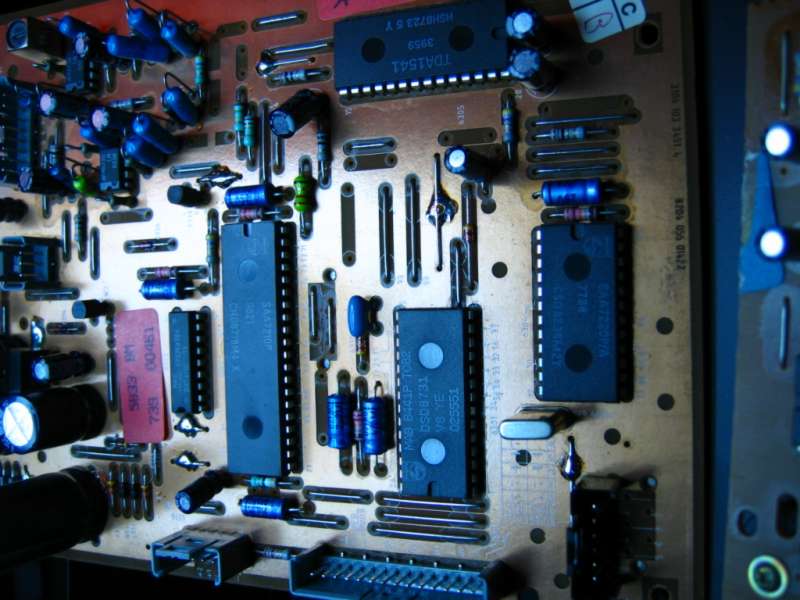
Grundig 9000 with standard Philips PCB and the A chip.

This is the mother of all DACs - the fourteen bit TDA1540 as found in
the Loewe CD 9000 and Marantz 73, Philips 103 and 104.
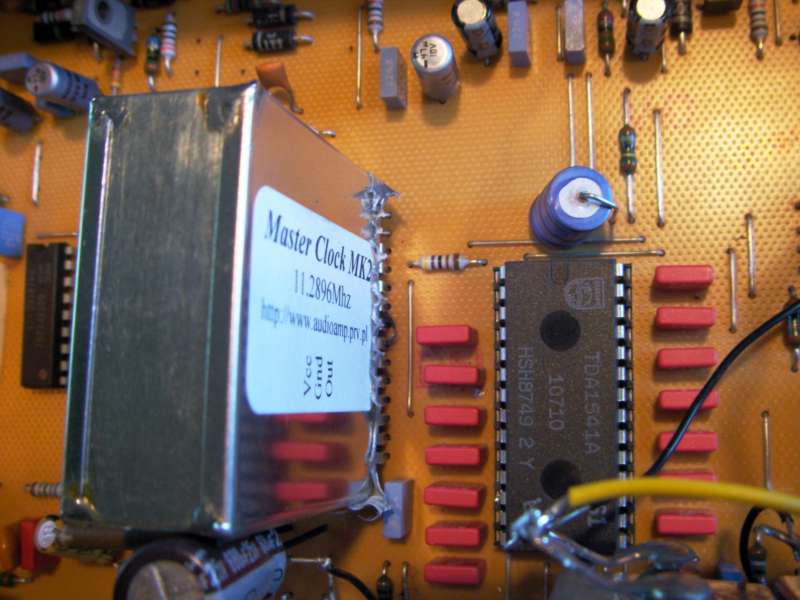
The S1 in the Revox B226S (decoupling caps - the red ones - already
good !)

The Naim has very similar config to the Revox, but the PCB is of
military style. An absolute overkill of engineering in all aspects.
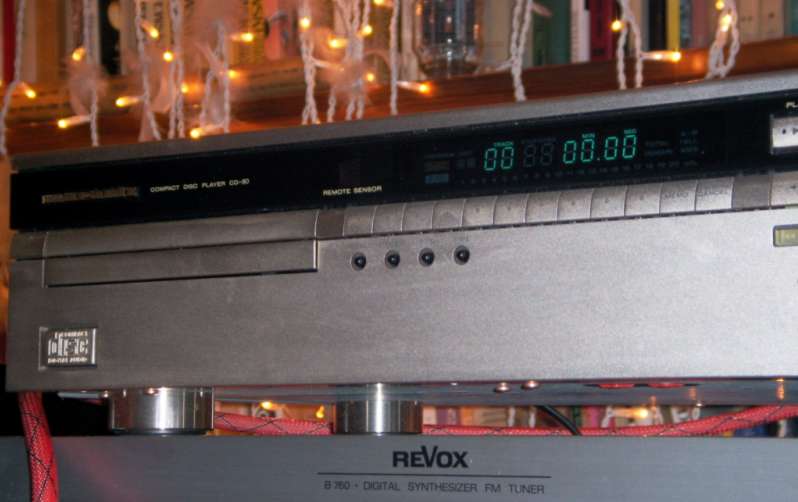

BOTTOM SIDE OF Marantz 60 with new caps literally squeezed in.
The marantz cd60 is almost identical to Marantz 40, 50, Grundig 9000,
Philips 630. It is very simple
and cheap in fact, but after electrolytic cap upgrade, decoupling cap
upgrade and
lampization - it can be VERY GOOD.
PCB is standard Philips one.

SMD caps (the small ones) and the "proper" MKP or MKT capacitor that
replaces them.
- the very necessary
job in cheaper CD players from second league.
Most players use here 100 nF, the better players use 220nF. I swear
that 220 sounds better than 100. I suggest to use 470nF by 63 V from
WIMA. Like on the photo somewhere way below - Grundig 8400 MK2.
Nowadays
I learned that the SMD caps can stay, we ADD the new caps across them.
So a nice job would be adding 220n to the existing 100nF to make 320
nF) Without removal job - the likelihood of damaging the PCB is very
small.
Another good option is to add the tantalums - something like 1uF by 10
V. But remember that the signal is polarized negatively (-5VDC) so put
the cap plus to the ground. Definitely keep the SMD in place then.
Tantalums have more dry but more detailed sound. Lots of thin air and
micro clues.
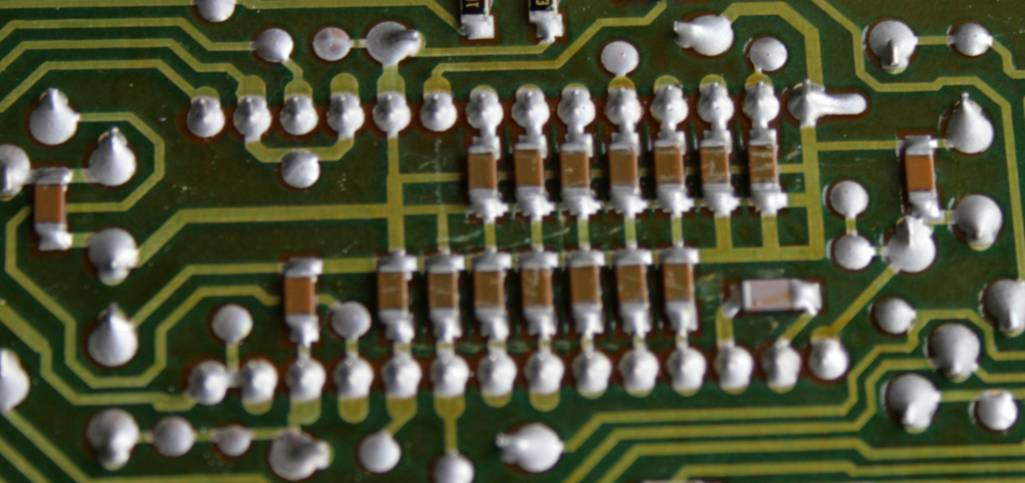
The Marantz CD 40
DAC area before cap replacement / addition. . All the brown SMD caps
can actually stay.
These extreme left one and extreme right one are in parallel (bypass)
with large electrolytic mounted on the other side. These are power
supply reservoir caps. Replace SMD with MKT (220nF/63V or better 470
nF) and the
electrolytic too - with os-cons or tantalums, at least 47 uF/16 V)
.
Observe polarity of electrolytics. Of course you can use Black Gates
too.
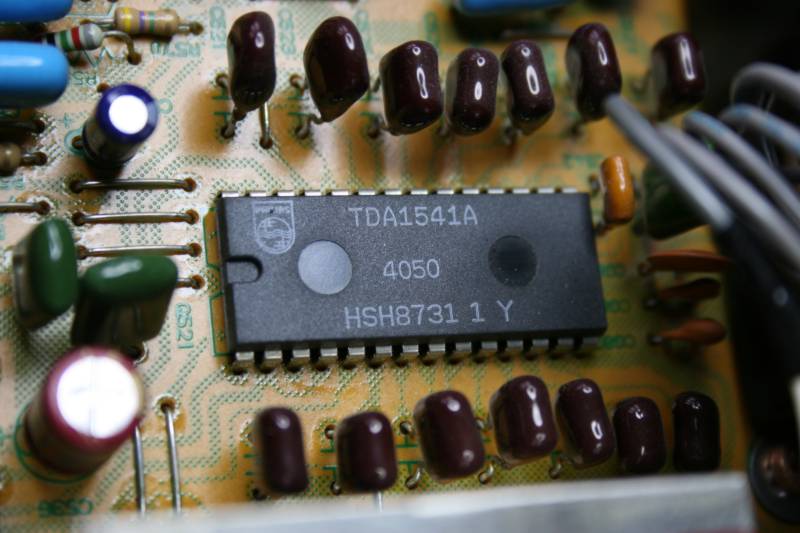
In Philips' flagship DAC 960 - the non-S chip is surrounded by premium
220n caps and gigantic power supply.

This is identical looking PCB of Marantz 94 MK1 - just like the Philips
DAC above - both made at the same time in the same Marantz Japan
factory. Non "S" variant of the DAC but the caps around are 220nF
not 100 like everywhere else. This is key element of their sound
signature.
The red dots here show the wire jumpers which we must lift for
lampization, and yellow dot is a ground point.

Superb Danish engineering in the B&O CD5500. Premium parts and
kosher solutions. 100 nF caps - white ones - around the DAC

Grundig 8400 mMKII - after removal of decoupling caps.

Grundig 8400 - capacitor part substitution.

Grundig 8400 - job completed.

Installation
of 220nF decoupling caps in Philips player (and later - on the
identical pcb - in Marantz 40, marantz 60, Grundig 9000 and over a
dozen others, which share same Philips PCB) On the picture the job is
not finished.
The biggest size of these caps that I found on any CD player is 220nF
but one CD - Arcam delta DAC has 4 out of 14 caps sized 470 nF.(the
orange tantals)

This is Arcam 70.2 DAC section with the
Tantals visible. - the orange head caps in a row of white cubes around
the TDA dac.
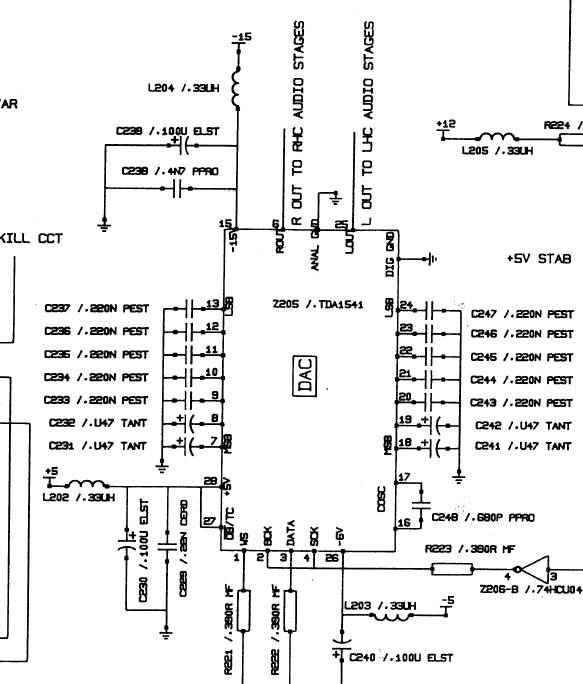
Strangely, on the photo above you can see the larger two caps (orange
tantalums) to be mounted to legs 13 and 12 and on the schematics
- to 7 and 8. Other side is correct - 18 and 19.
I think the PCB is good, and drawing is mistaken.
Mr. Pedja Rogic, one of the TDA Gurus, advocates putting in each row 6
x 100 nF and the two MSB - legs 13 and 18 - 2,2 uF. So Arcam
increases two last caps, and Rogis - just one last per each channel
Look also at great job by ARCAM - one
of the best companies in existence - they use a coil between the power
supply regulator and the last caps before the power consumer pins. VERY
GOOD PRACTICE. I will start doing the same in all my jobs.
Why decoupling is important,
what really happens there ?
The process of musical signal
creation inside the DAC is explained on this drawing of the TDA1540
guts. All elements are inside the IC but the capacitors CAN'T be
integrated that's why they are outside. The switches take some current
from each cap and build up the music signal.
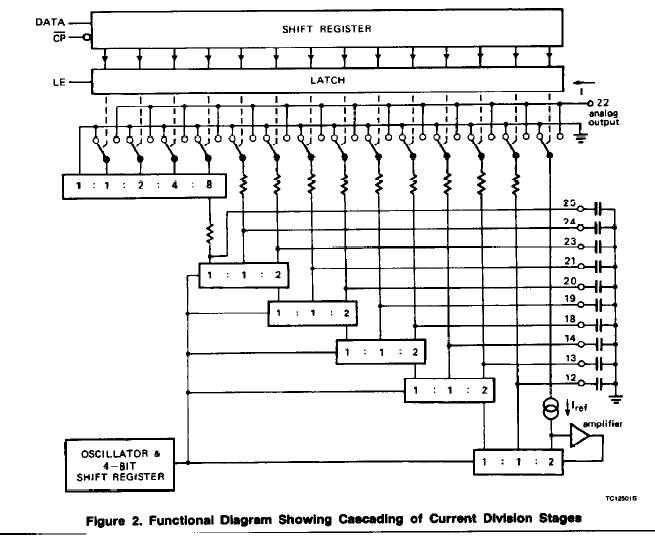
As you can see, the caps are DIRECTLY responsible for music, for the
sound , color and flavour.
MArantz - who was owned by Philips who invented the TDA chip - used 100
nF in cheap players but 220 nF in their best ones.
A solution by Lukasz Fikus will be: 220 nF all 5 caps in each row, then
470 nF like Arcam, and last one 2,2 uF a'la Rogic.
I will follow up with some scope measurements.
Rogic DAC is HERE
One clever guy Thomas who tries to build a commercial DAC spent many
years optimizing the TDA circuit and arrived at the dual differential
balanced config with some GIGANTIC decoupling caps - In my estimate may
be close to 1 uF but I don't know for sure - just looking at the pic:
the blue cubes are huge.
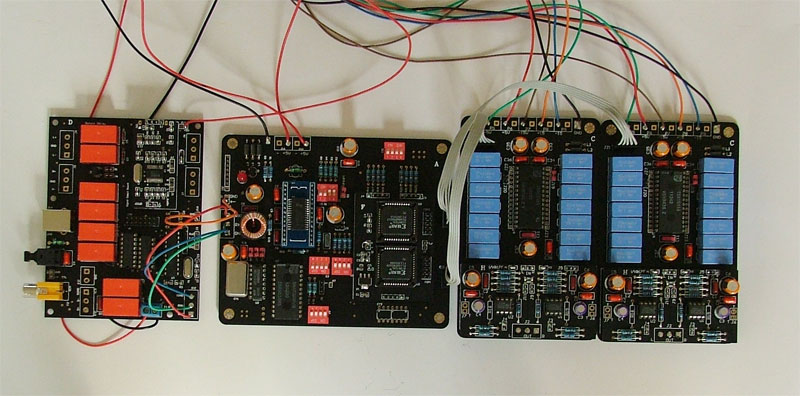
The story of this project (probably best TDA 1541A DAC ever
designed) is
here:
http://www.vt4c.com/bb/viewtopic.php?p=13568&sid=a105dc5d441c7e6c616e714c3b4ee190
Later on I found this PCB set to be used in SATCH DAC from Hong
Kong DIYHIFISUPPLY.com
I describe it HERE
Funny, the huge blue caps turned out to be 100nF by 250 V as the
data sheet of philips advocated 100 nF.
Here is what Simon from DIYHIFISUPPLY had to say about the cap size :
Hello Lukasz,
First, 100nF are the standard per
datasheet. Larger values changes the
sound, but if the result is better is debatable.
Second, while 250V is indeed
overkill, but thicker film means lower
microphonics. So there is nothing "wrong" with using 100nF/250V Film
capacitors. They maybe used to achieve a specific sound.
Regards
Simon
OK, fair enough, we have
cleared the ground at least. The proof will be in listening.
The DAC is pictured here:
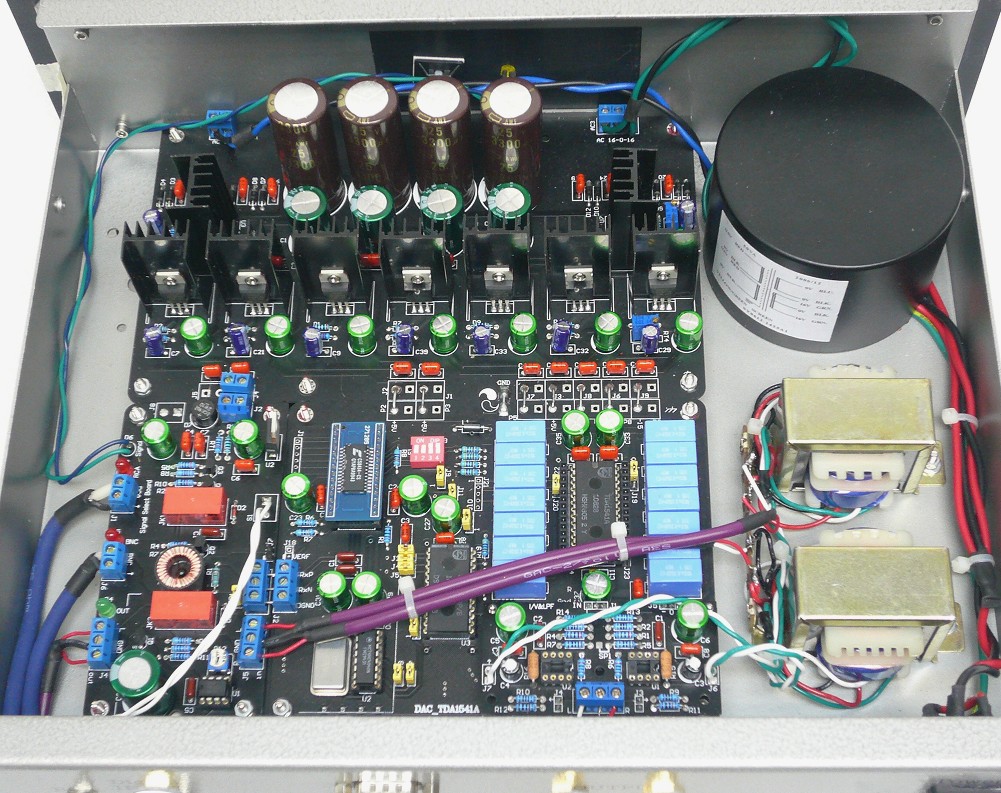
In the end, the satch took 3 months to play FANTASTIC but this required
very heavy mods including lampization
of the satch.
We can argue, that a 700 Bucks DAC should play well in the first place,
and we would be right.
It is better to build such SATCH from
scratch and the green PCB comes to the rescue (from
Analogmetric). It is basically SATCH on one PCB, which by the way is a
much nicer PCB than that of SATCH:
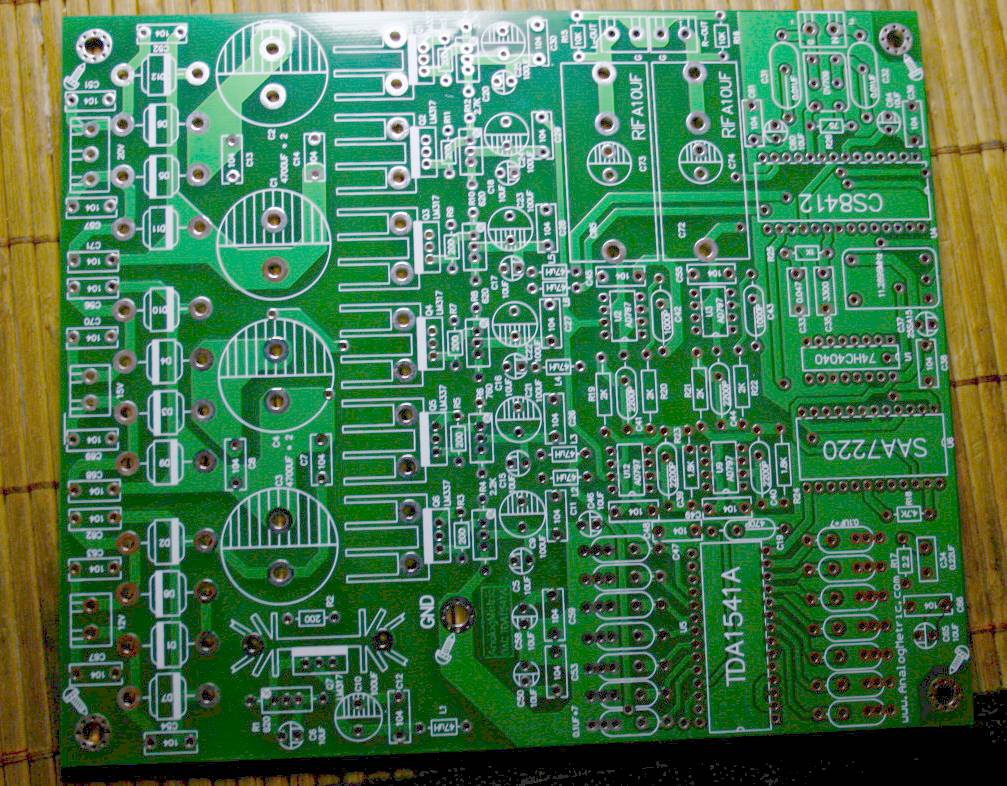
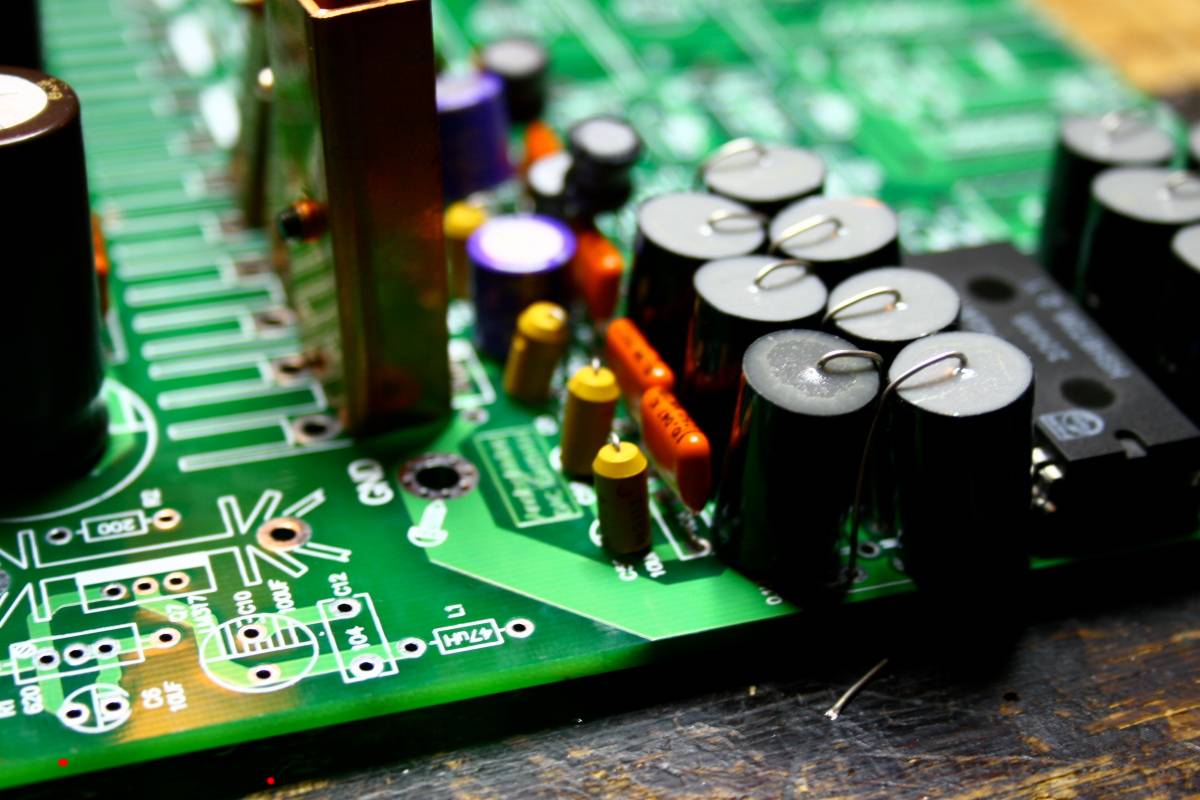
We can buy the GREENDAC for circa 15 USD and we need to populate only
less than half of parts, but this time no mercy only the best parts
need to apply.
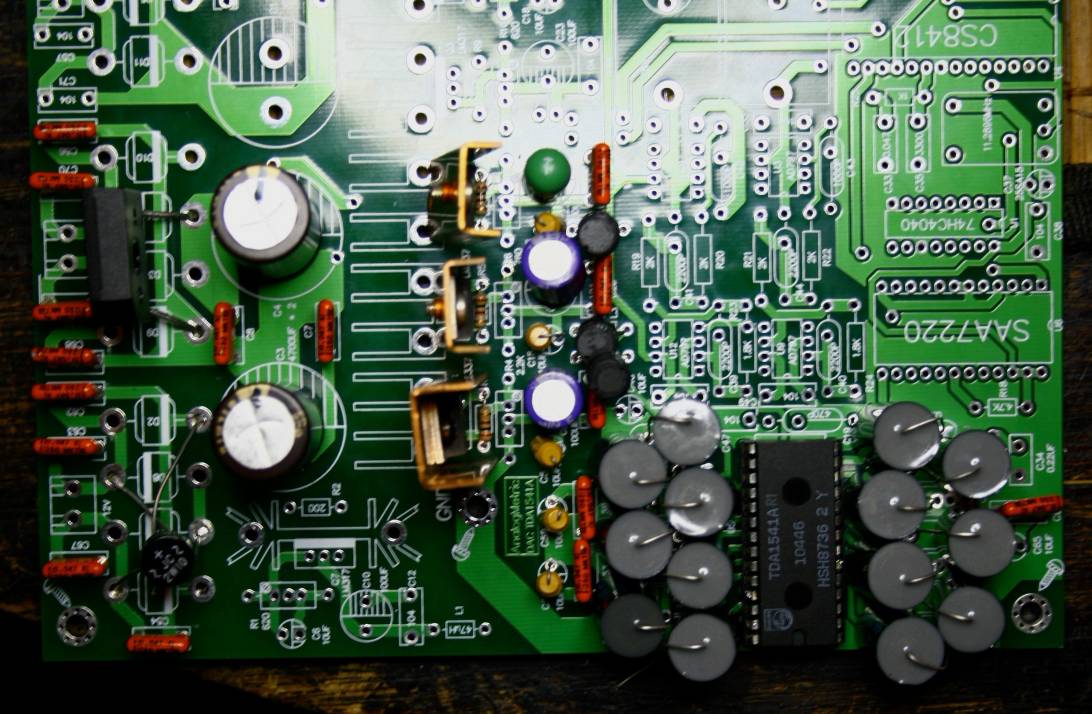

This is Revox B126 with non-s but otherwise IDENTICAL board as B226-S.
Best sound was achieved with a half of BB-OPA2604 as a converter and
amplifier. Both outputs from leg one of opamp via PIO to RCA's. No
lampization in this one, just bypass.
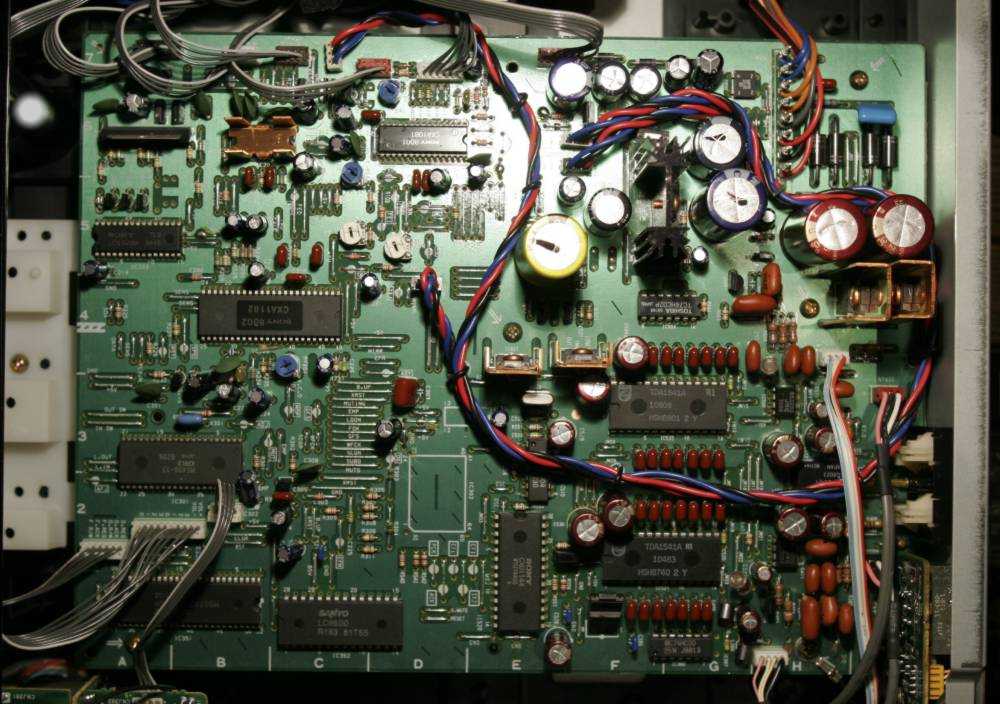
PHOTO: Absolutely superb player - Sony 227 ESD with
two parallel
TDA's. Not "S" like Grundig, but still very good. Not
differential like in Marantz 94/2 - sorry. But the caps, the grounding,
the opamp
arrangements -, the regulators - all is FIRST CLASS. Similar to Philips
DAC960 and Philips CD880, Which were made by Marantz Japan.

This is a bigger brother of 227 - the Sony CDP-337ESD. Two "A" chips
in parallel, sometimes - non-A, depending on the batch.

This is again a Sony, but this time it is a 555ESD. One chip, probably
S, I must check it because it is covered.
One funny observation: after removing of all 17 capacitors from SMD
board, the player still plays good sound, Not as good as with new 220
nF caps, but quite good indeed.
For the fans of TDA1541A: the absolute champion of TDA'ization is
Cambridge Audio CD3 player from UK.
It uses 4 DACs in parallel.
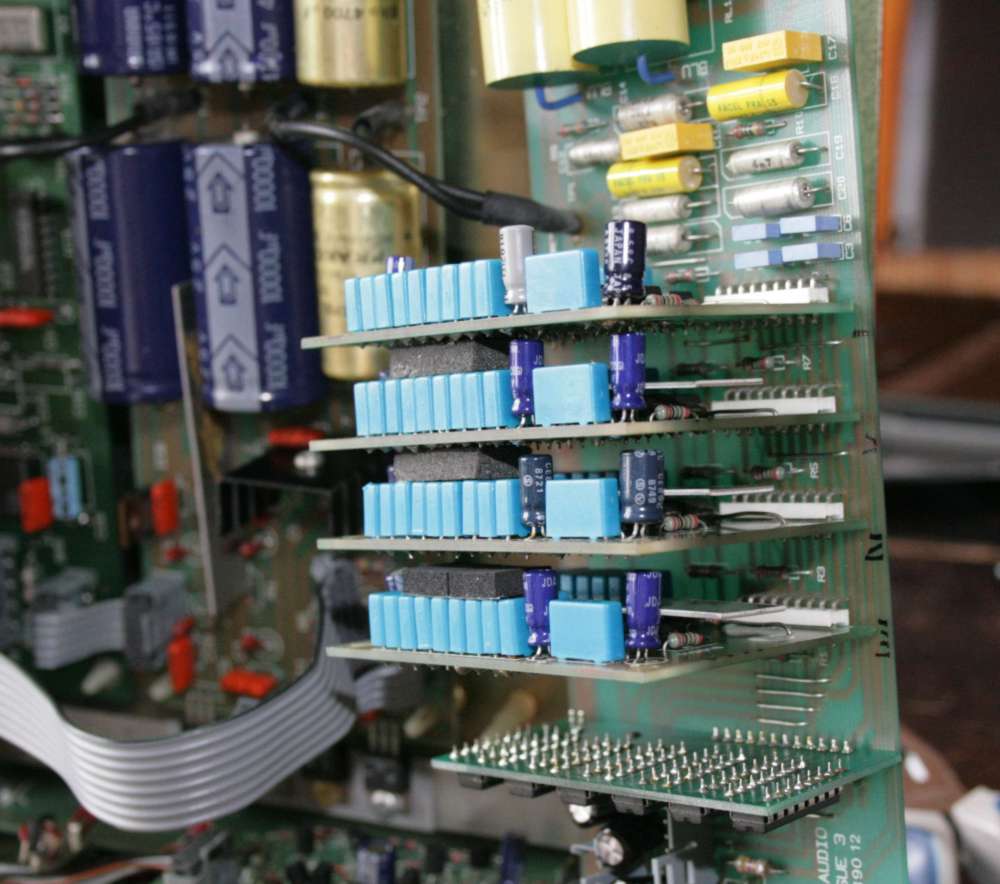
It must be seen and heard to be believed.
See it here
CAMBRIDGE CD3
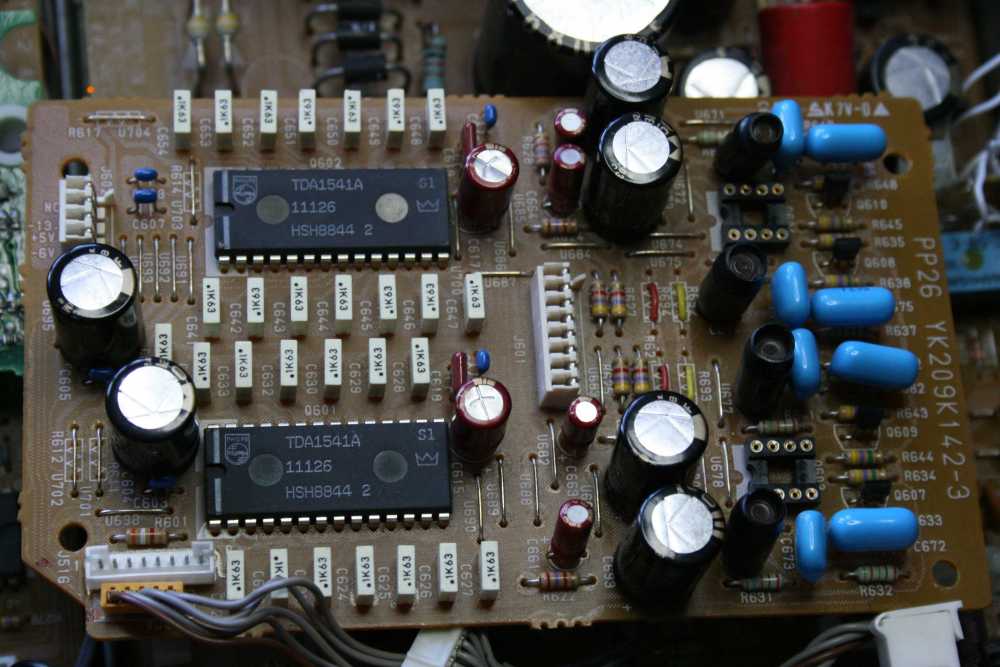
This picture shows the DAC board of Marantz
CD-94-2 which has two
single crown chips in differential balanced mode (no balanced output is
available prior to lampization).
The best CD for beginners to start the adventure in my opinion is this
one (equivalent of Marantz 40) Grundig CD8100 - see it below.
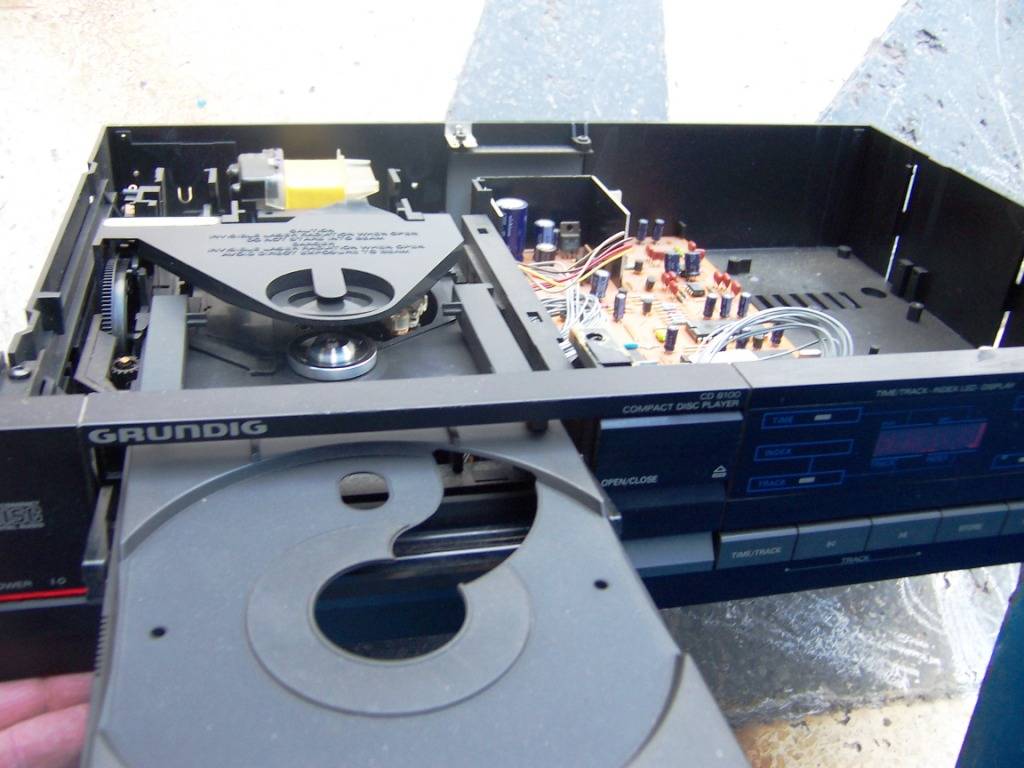
Just imagine taking this lampized 20 Euro player to your buddy who has
Wadia 860X and when you wipe the floor with the Wadia.
By the way, it has the same mechanism as the NAIM CDS1. Hard to find -
25th variant.
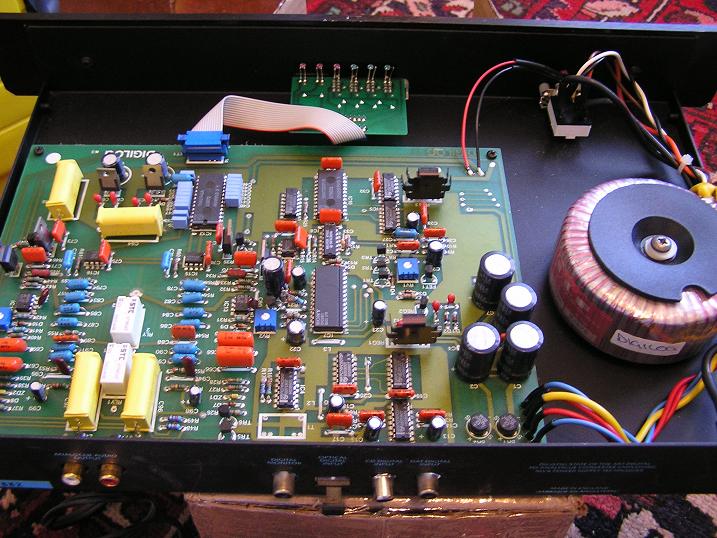
This is the inside of Musical Fidelity DAC with TDA1541A. All
parts are premium and layout is perfect, there is nothing to tweak
really, only add tubes.
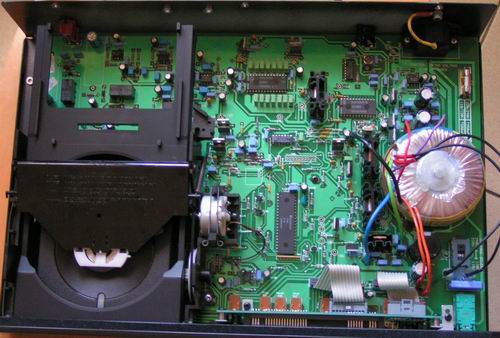
This is a CREEK CD60 player, photo courtesy of Aldo from Torino. It has
the S1 and the 4/14 mechanism. What a JOY TO LOOK AT I guess it
sounds superb on its own, even without tubes.
The parts and layout is one of the best , just like NAIM !!!
BUY THIS ONE !!!
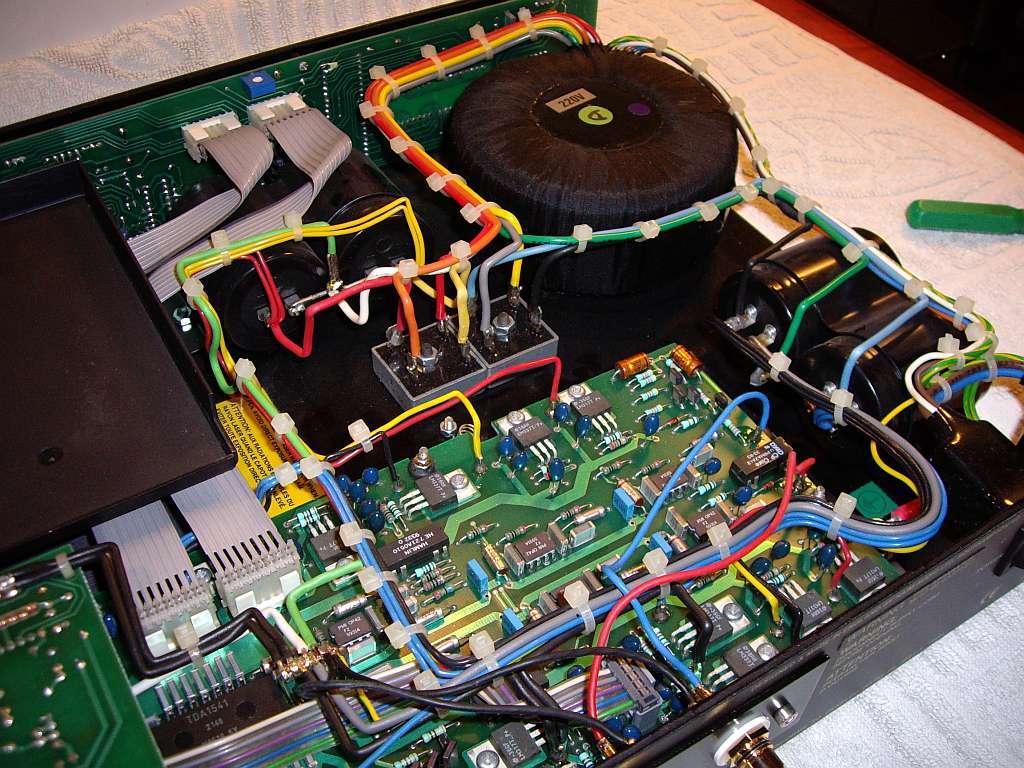
This is another NAIM - the CDI. One box version of the almighty CD1.
Note all the power regulator use TANTALUM caps all around. (the blue
drops)
This is yet another NAIM - the newest of the TDA series - the
CD3. I absolutely love this player. I want one !
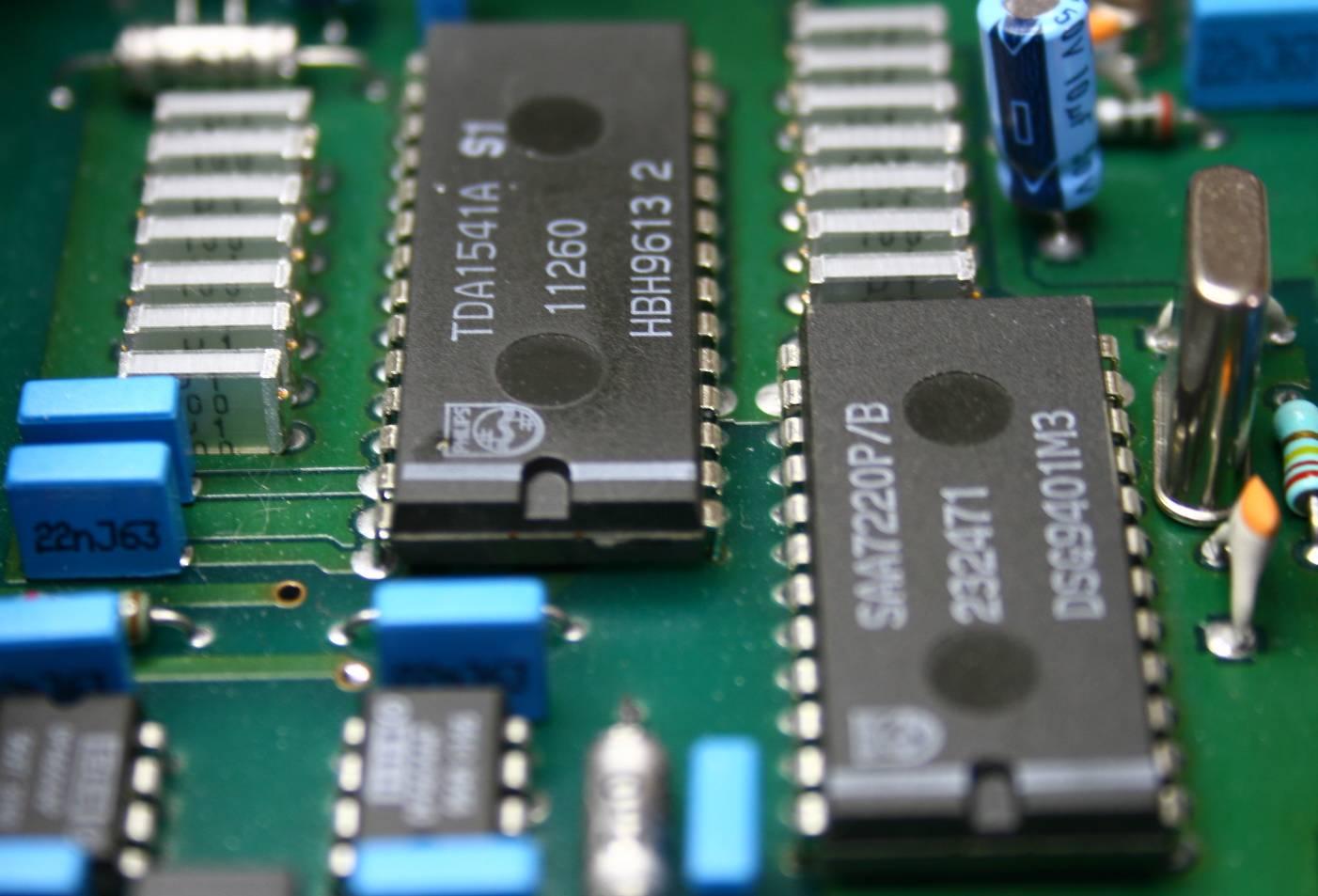
And this - tadadada drums
rolling - is the "British Cottage
Industrys best PCB design award" CD player - Sugden
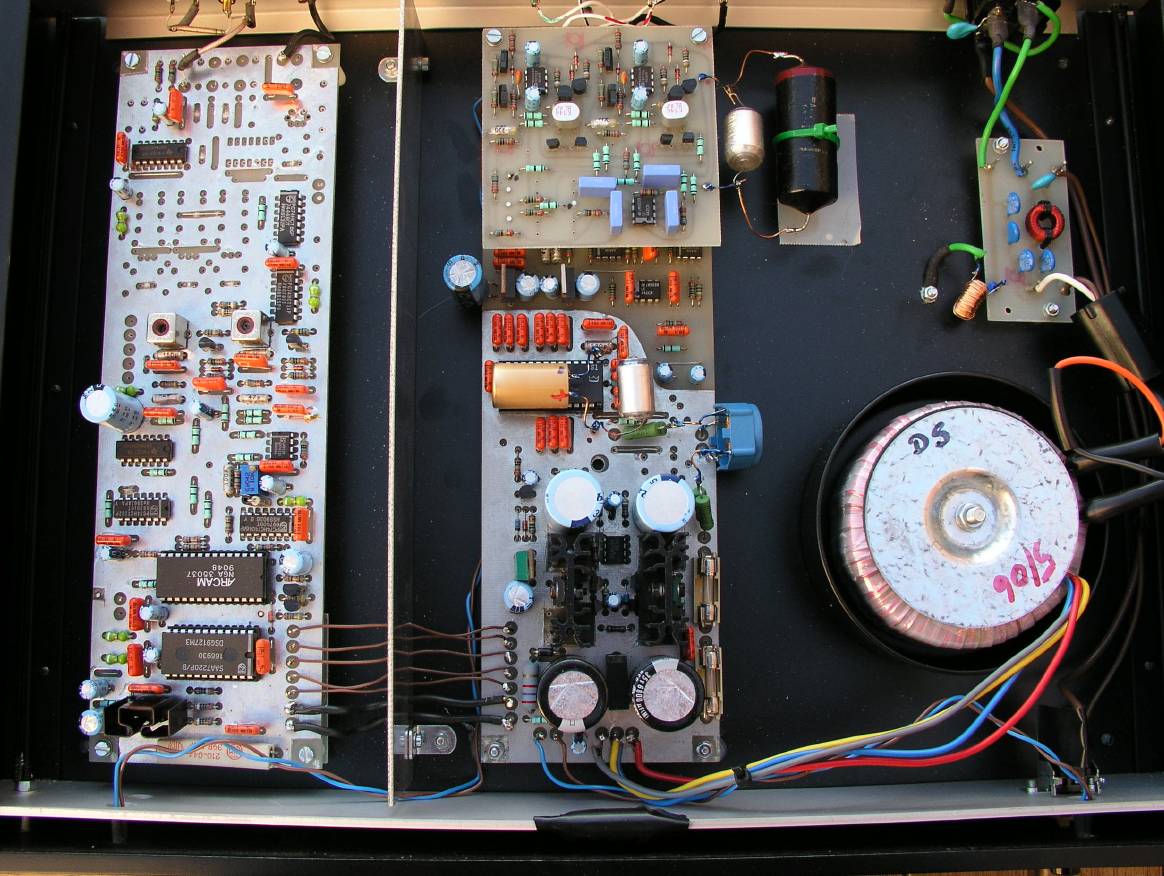
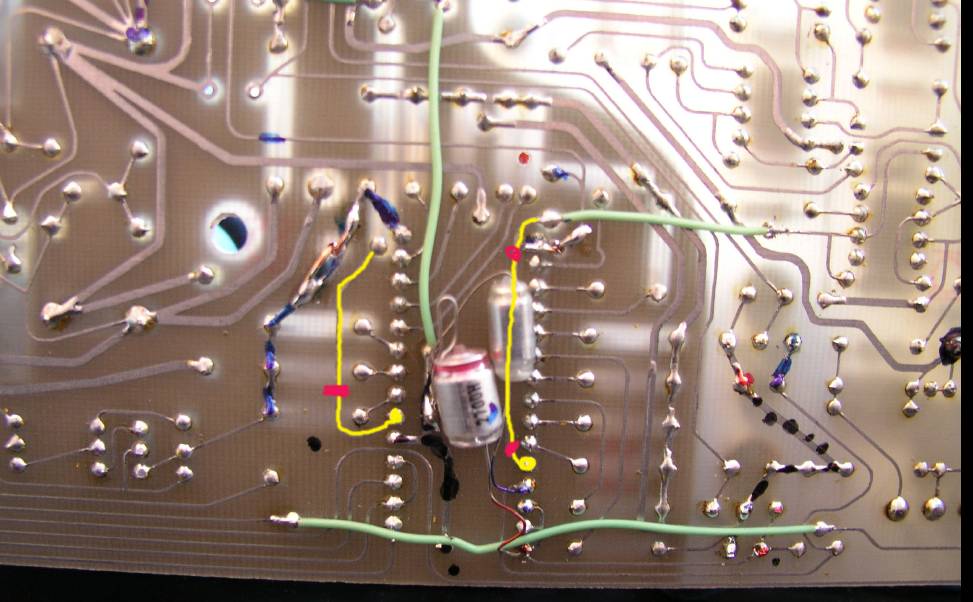
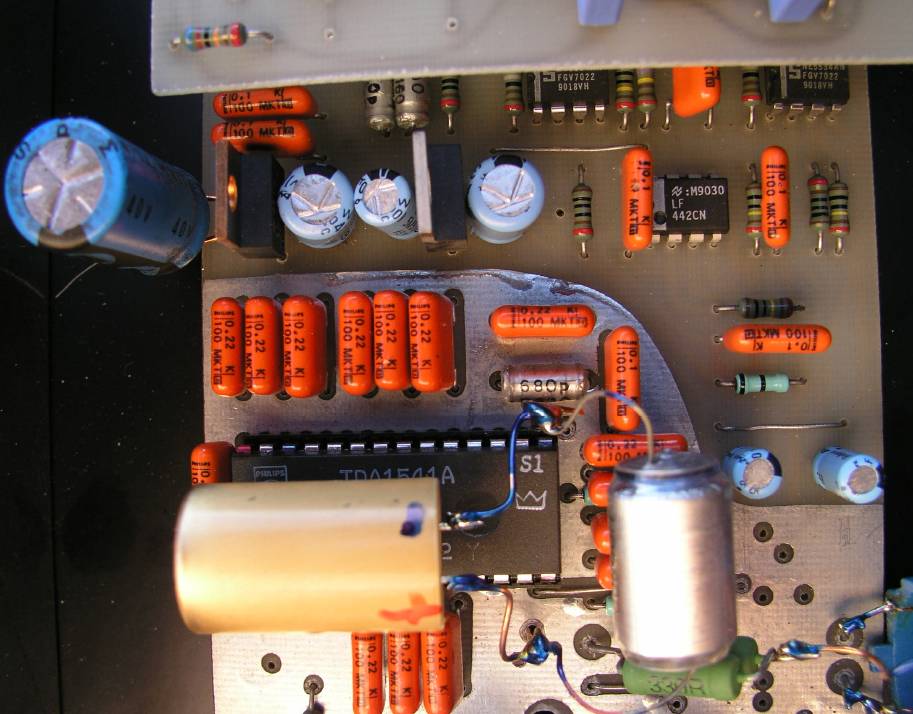
Lampization of the TDA chip
6N2P
Discovery of this tube was a shock for me. Nothing prepared me for such
leap in quality. When designing my best hot-rodded superdac SATCH TUBED, I
was researching alternative tubes and I found in the very end the
one which thrashed them all - 6N2P.
It looks like typical small noval, but the SOUND !!!!! What a
revelation. Everyone whom I subjected to test drive of 6N2P in their
own gear commented that this can't be true. Such is the quality leap.
This tube is somewhat similar to ECC83 but beats it in quality hands
down.
The very high amplification factor of 6N2P (100) predestines it to
working with small input signals, such as from I OUT DACS. and in
circuits with very high load impedance - like another tube grid.
Yes, the tube 6N2p is IDEALLY suited to work especially with the
World's
best DAC chips - TDA1540, TDA1541A, TDA1541A/S1, TDA1541A/S2,
AD1862, AD1865, PCM58, PCM63, PCM1702, PCM1704 and PCM1794.
This tube is absolutely not recommended to make lampizators for the U
out DACs like the best of this kind CS4397, CS4398, AD1855, TDA1549,
and Wolfson WM8740 and WM8741
For these DAC types - use LAMPIZATOR with 6N6P tube (6H6Pi).
THE BEST SCHEMATICS OF THE 6N2P Lampizator and TDA DAC
DATASHEET OF 6N2P
The
short list of CD players which have TDA1541A
chip.
| ACOUSTIC
RESEARCH CD-06SE TDA1541A CDM-4 |
|
| ADCOM
GCD-575 TDA1541A KSS-212B |
|
| ARCAM
ALPHA
TDA1541A |
|
| ARCAM
ALPHA 5 PLUS TDA1541A
CDM-9 |
|
| ARCAM
ALPHA PLUS TDA1541A |
|
| ARCAM
DELTA 70.2 |
TDA1541-S1 (Single Crown) CDM-4/11 / CDM-4/31 |
|
| ARCAM
DELTA BOX 1 TDA1541A |
|
|
| Bang &
Olufsen Beogram CDX2 |
TDA1541A – SAA7220 CDM-2 |
|
| Bang &
Olufsen CD5500 |
TDA1541A |
CDM-4/11 |
|
|
| CAMBRIDGE
AUDIO CD2 |
4 x
TDA1541 – SAA7220 |
CDM-2/10 |
|
|
| Cambridge
Audio CD3 (4 x
TDA1541 and CDM1 MKII) |
|
| CREEK CD60 |
TDA1541A-S1
– SAA7220P/B |
CDM-4/14 |
|
|
| GRUNDIG
CD9009 |
2xTDA1541A/S1 |
CDM1mkII |
|
|
| LUXMAN
D-500X’s II |
TDA1541A-S1
(Single Crown) |
CDM-3 |
|
|
|
| MARANTZ
CD-12 |
TDA1541A-S2 (Double Crown) CDM-1 |
|
| MARANTZ CD7 |
TDA1541AS2
(double crown) |
CDM 12.3 |
|
|
| MARANTZ CD80 |
TDA1541A/S1/Q |
CDM1mkII |
|
|
| MARANTZ CD-85 |
TDA1541A-S1
(Single Crown) |
CDM-1 Mk II |
|
|
| MARANTZ
CD880J |
TDA1541A-S1
(Single Crown) |
CDM-1 Mk II |
|
| MARANTZ CD94 |
TDA1541A |
CDM1 |
|
|
|
MARANTZ
CD94mkII
|
TDA1541A/S1 |
CDM1 |
|
|
|
| MARANTZ
CD-99SE |
2 x
TDA1541A-S1 (Single Crown) |
CDM-1 |
|
|
|
| MARANTZ
CDA 94 |
TDA1541A-S1
(Single Crown) |
It’s a DAC |
|
| Marantz
KI CD10, 11, 16. |
| Non KI don't
count... they are TDA1547 |
|
|
|
| MARANTZ
PROJECT D-1 |
2 x
TDA1541A-S2 (Double Crown) |
It’s a DAC |
|
|
| Meridian
206 mkII |
|
|
| MCINTOSH MCD7005 |
TDA1541A |
CDM-2/10 |
|
|
| MCINTOSH MCD7007 |
TDA1541A-S1
(Single Crown) |
CDM-1 |
|
|
|
| MERIDIAN 206 |
TDA1541 |
|
|
|
| MERIDIAN 207 |
TDA1541A-S2
(Double Crown) |
CDM-1 / CDM-4 |
|
|
| NAIM AUDIO
CD1 |
TDA1541 |
CDM-2 |
|
|
|
| NAIM AUDIO
CD2 |
TDA1541A |
CDM-9 |
|
|
|
| NAIM AUDIO
CD3 |
TDA1541A-S1
(Single Crown) |
CDM-9 |
|
|
|
|
|
|
|
| NAIM AUDIO
CDI |
TDA1541A-S1
(Single Crown) |
CDM-4/27 / CDM-9 Pro |
|
| NAIM AUDIO
CDS1 |
TDA1541-S1
(Single Crown) |
CDM-4/25 |
|
|
| NAKAMICHI
CDP-2E TDA1541A
– CXD1088 |
|
| NEC CD-10 |
2 x TDA1541A-S1 (Single
Crown) |
KSS-150A |
|
| NEC CD-816 |
2 x TDA1541A-S1 (Single
Crown) |
KSS-150A |
|
| NEC
CD-830DS 2
x TDA1541A-S1 (Single Crown) |
|
|
|
|
| ORELLE
CD100SE |
TDA1541A-S1
(Single Crown) |
CDM-4 |
|
|
|
| PHILIPS
CD350 Mk II |
TDA1541-S1 |
CDM-2/10 / CDM-2/29 |
|
| PHILIPS
CD-80 |
TDA1541A-S1
(Single Crown) |
CDM-1 Mk II |
|
|
| PHILIPS
CD-85 |
TDA1541A-S1
(Single Crown) |
CDM-1 Mk II |
|
|
| PHILIPS
CD-880 |
TDA1541A/S1/Q |
CDM 1mkII |
|
|
| PHILIPS
LHH1000 |
TDA1541A-S1
(Double Crown) |
CDM-1 |
|
|
|
| PIONEER
PD-8070 TDA1541 |
|
|
| QUAD
66 |
|
TDA1541A |
CDM-9 |
|
| ROTEL
RCD-820 |
TDA1541 |
|
|
|
| ROTEL
RCD-855 |
TDA1541A-S1 |
CDM-4/19 |
|
|
| ROTEL
RCD-955 |
TDA1541 |
CDM-4 |
|
|
|
| ROTEL
RCD-955AX |
TDA1541A
– SAA7220P/B |
CDM-4 |
|
|
| SONY
CDP-207ESD |
1 x
TDA1541 – CXD1088 |
KSS-150A |
|
|
| SONY
CDP-301V |
TDA1541
– CXD1088 |
KSS-210A |
|
|
| SONY
CDP-333ESD |
1 x
TDA1541 – CXD1088 |
Sony BU-1E |
|
|
| SONY
CDP-337ESD |
2 x
TDA1541A – CXD1144 |
KSS-190A |
|
|
| SONY
CDP-507ESD |
2 x
TDA1541 – CXD1144 |
KSS-151A / KSS-190A |
|
| SONY
CDP-555ESD |
1 x
TDA1541A – CXD1088 |
Sony BU-1E |
|
|
| SONY
CDP-605ESD |
TDA1541
– CXD1088 |
Sony BU-1E |
|
|
| SONY CDP-68 |
TDA1541
– CXD1088 |
KSS-210 |
|
|
| SONY CDP-910 |
TDA1541A
– CXD1088 |
KSS-151A |
|
|
| SONY CDP-M75 |
TDA1541
– CXD1088 |
KSS-210A |
|
|
| SONY CDP-M95 |
TDA1541
– CXD1088 |
KSS-210A |
|
|
| SONY DAS-R1 |
TDA1541AS1 (single crown) |
|
|
| SONY DAS-R1 |
2 x
TDA1541A-S1 – CXD1144 |
It’s a DAC |
|
|
| STUDER A727 |
TDA1541A-S1
(Single Crown) |
CDM-1 |
|
|
|
| STUDER A730 |
TDA1541A-S1
(Double Crown) |
CDM-3 |
|
|
|
| SUDGEN SDT-1 |
TDA1541AS1 (single crown) |
|
|
| SUGDEN
MASTERCLASS |
TDA1541A-S-Crown
– SAA7220 |
CDM 12.1 |
|
|
| TEAC
CD-Z5000 |
2 x
TDA1541A |
KSS-210A |
|
|
| TEAC
D-500 |
2 x
TDA1541A-S1 – SM5813 |
It’s a DAC |
|
|
|
|
|
|
|
|
|
|
|
|
|
|
|
|
|
|
|
The following text is reprinted without permission of
Stereophile - an interesting history of TDA series chip:
John
Atkinson, December, 1990
SOME HISTORY of TDA1541A DAC
from Philips

"Desperation is the
Mother of Invention." Isn't that how the proverb
goes? Certainly it applied ten years ago in the case of the Philips
engineers working on the development of the Compact Disc system. Given
a specification that had included a 14-bit data word length, they had
duly developed a 14-bit DAC chip, the TDA1540, only then to be informed
that the CD standard decided upon after Sony joined forces with the
Dutch company would involve 16-bit data words. (Thank goodness!)
Philips having
already
committed the 14-bit design to silicon,
they would not have a 16-bit DAC ready in time for the medium's launch
in the Fall of 1982. They were thus faced with the problem of squeezing
four times the resolution from their existing 14-bit DAC. The result
was an ingenious digital filter that combined 4x-oversampling and
noise-shaping—the latter is effectively a digital feedback loop, the
error produced when the filtered digital data are truncated to 14 bits
being fed back to the beginning—to give a digital system with full
16-bit resolution.
Philips's true
16-bit
DAC chip, the TDA1541, followed in 1985,
but the seeds of ingenuity had obviously been sown: if the combination
of oversampling and noise-shaping can increase the resolution of a DAC
using too few bits, then why not go all the way and implement a system
that used a simple 1-bit DAC and make up for the shortfall in
resolution by taking the oversampling, noise-shaping process to the
limit?
The result was a
D/A
system, internally referred to by Philips
as "DAC3" (the two earlier systems were DAC1 and DAC2, of course),
which was introduced in the summer of 1989. I discussed the design of
the system in detail in June 1989 (Vol.12 No.6, p.57), but briefly, the
SAA7321 DAC3 chip massively oversamples the input data at a 256x rate,
interpolating the new sample values to produce a 17-bit datastream
sampled at 11.02MHz (footnote 1). The data words are then fed to a
1-bit DAC, with the 16-bit error fed back in a noise-shaping loop.
Mathematically, this should—and does—result in the pulse stream output
by the DAC having the full 96dB+ dynamic range of a conventional 16-bit
system. But unlike multibit systems, this "Bitstream" DAC is inherently
linear and monotonic over its entire range—the reasons why were given
in Peter Mitchell's "Industry Update" in January 1990 (Vol.13 No.1,
p.36)—requiring no laser-trimming of on-chip resistor values or
in-production adjustment of linearity, both of which add to a CD
player's manufacturing cost, hence price.
I was told by
Philips
last year that the Bitstream DAC was
therefore intended to be used in low-cost and portable players, the
company saying that they would remain with their TD1541-based chip set
for high-performance players. Very rapidly, however, once designers had
tried the Bitstream approach, it became apparent that, correctly
implemented, it could surpass traditional D/A conversion in the
preservation of low-level detail. (Even Philips has now introduced a
Bitstream player, the LHH500.)
ABOUT THE CD
RED-BOOK
Philips and Sony, developers of the CD technology, and of the 12cm CD,
published their specifications for CD-Audio in 1980-- reportedly in a
binder with red covers. The Red Book addressed the physical
specifications for the CD; the tracks, the sector and block layout,
coding and sampling of digital audio files, and other specifications.
The Red Book was key for the high quality sound of CD-Audio, which
became a standard and key for the worldwide CD-ROM industry. The
International Electrotechnical Commission published the Red Book as
their Doc IEC 908 (1987)
There are other "books"
Yellow - CD-ROM
White - CD-ROM XA
Green - CD-I
Orange - CD-RW, CD-MO, CD-WO
Blue - Mixed mode CD-A
A good online glossary of CD terms can be found here:
http://www.cdpage.com/Compact_Disc_Glossary/glossarym.html
ABOUT THE
NON-OVER-SAMPLING modification
Encouraged by my first
experience - I also modded some players - the mighty philips CD-880 and
the Marantz CD-94-1 and some Naims, Marantz CD94-2, Marantz CD50,
by
removing the oversampling function of digital
filter SAA7220p/b.
If it has the usual trio of chips - 7210 (called chip A) , SAA7220P/B
called chip B and TDA1541A called chip C - means it is
doable. I
followed the instruction of DCAUDIO and the result was really
fantastic. The owner of the first player under scrutiny, who is a first
class
opera
singer and music lover
- with his ears 100 times more trained than mine - just loved the
result of this 20 minute mod. Clearly - there is no debate - no return
to the oversampled mode. I agree - the listening enjoyment is increased
by a whole new
level.
The famous "veil" is removed, a thick veil that is.
READ MORE HERE
BACK
































